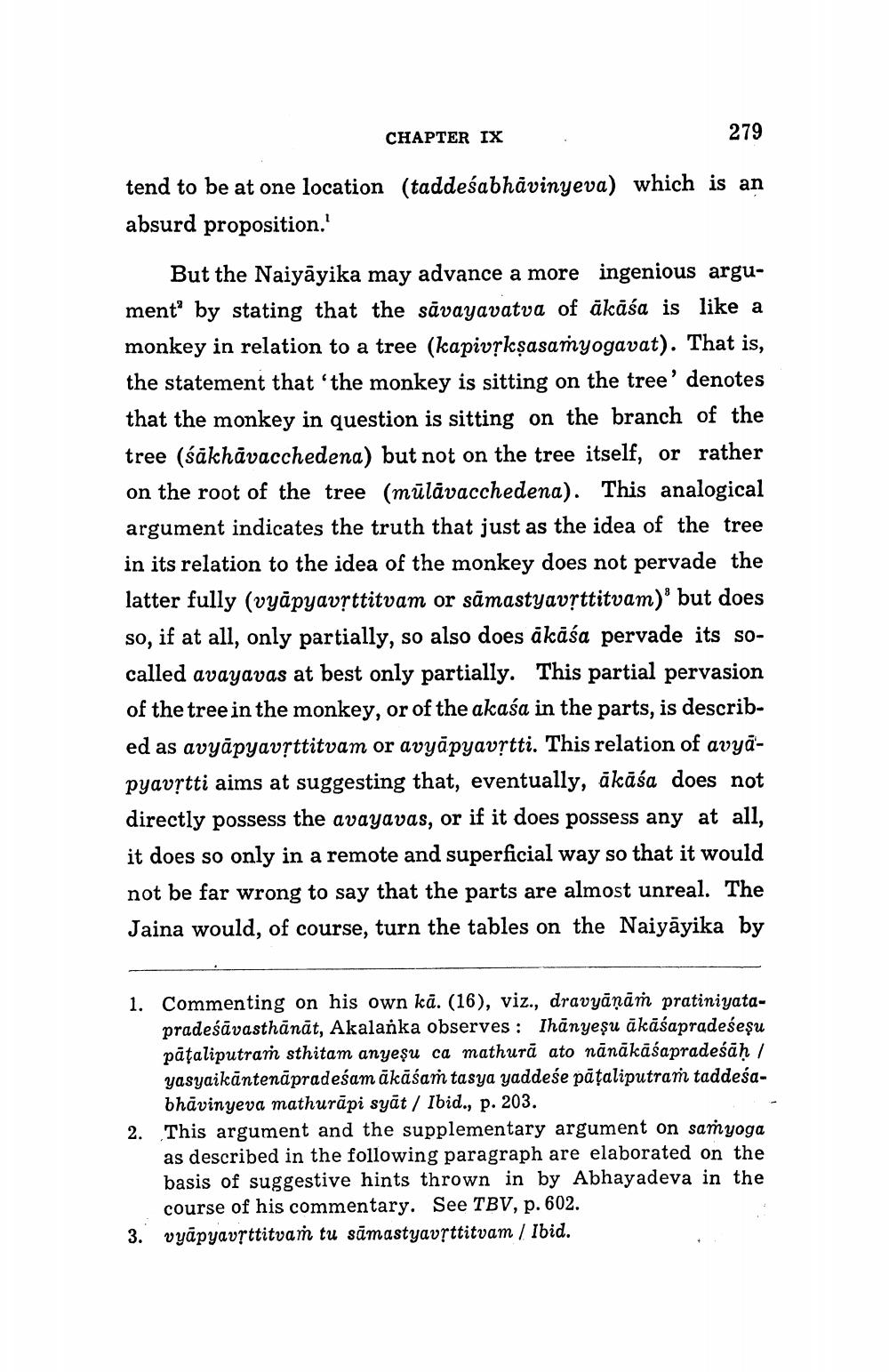________________
CHAPTER IX
279
tend to be at one location (taddeśabhavinyeva) which is an absurd proposition.'
But the Naiyayika may advance a more ingenious argument' by stating that the savayavatva of ākāśa is like a monkey in relation to a tree (kapivṛkṣasamyogavat). That is, the statement that 'the monkey is sitting on the tree' denotes that the monkey in question is sitting on the branch of the tree (śākhāvacchedena) but not on the tree itself, or rather on the root of the tree (mulavacchedena). This analogical argument indicates the truth that just as the idea of the tree in its relation to the idea of the monkey does not pervade the latter fully (vyāpyavṛttitvam or samastyavṛttitvam) but does if at all, only partially, so also does ākāśa pervade its socalled avayavas at best only partially. This partial pervasion of the tree in the monkey, or of the akasa in the parts, is described as avyāpyavṛttitvam or avyāpyavṛtti. This relation of avyāpyavṛtti aims at suggesting that, eventually, ākāśa does not directly possess the avayavas, or if it does possess any at all, it does so only in a remote and superficial way so that it would not be far wrong to say that the parts are almost unreal. The Jaina would, of course, turn the tables on the Naiyayika by
so,
1. Commenting on his own kā. (16), viz., dravyāṇāṁ pratiniyatapradeśavasthānāt, Akalanka observes: Ihanyeṣu ākāśapradeśeşu pāṭaliputram sthitam anyeşu ca mathura ato nānākāśapradeśaḥ / yasyaikāntenāpradeśam ākāśaṁ tasya yaddeśe paṭaliputram taddeśabhāvinyeva mathurāpi syat / Ibid., p. 203.
2. This argument and the supplementary argument on samyoga as described in the following paragraph are elaborated on the basis of suggestive hints thrown in by Abhayadeva in the course of his commentary. See TBV, p. 602.
3. vyapyavṛttitvam tu samastyavṛttitvam / Ibid.




